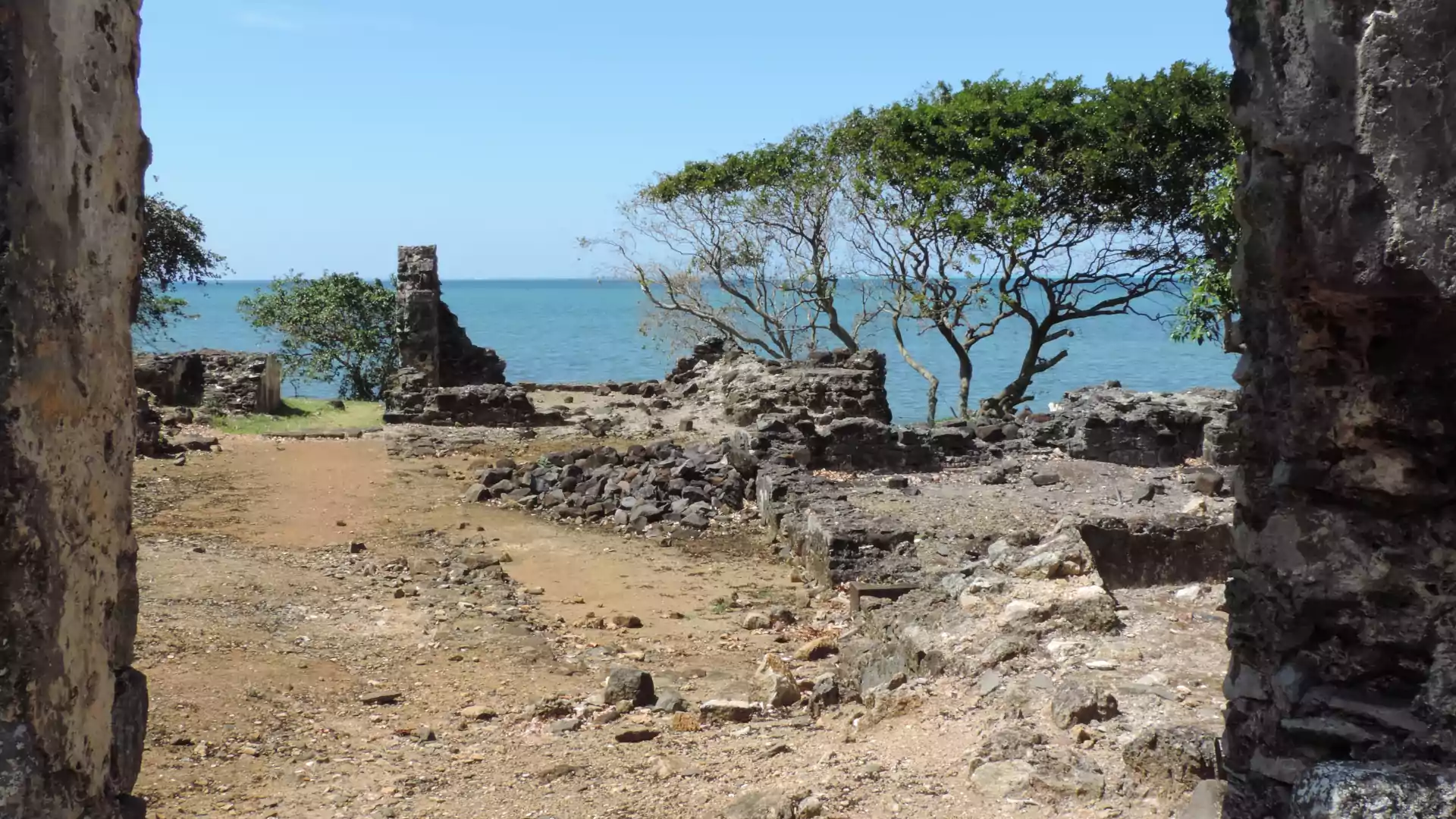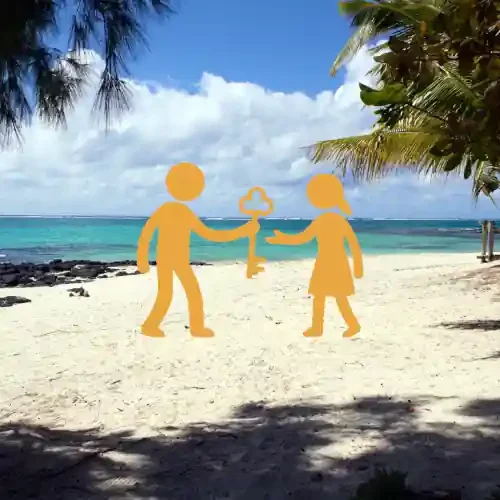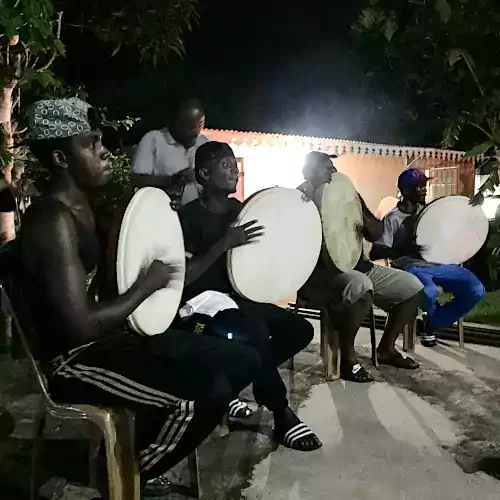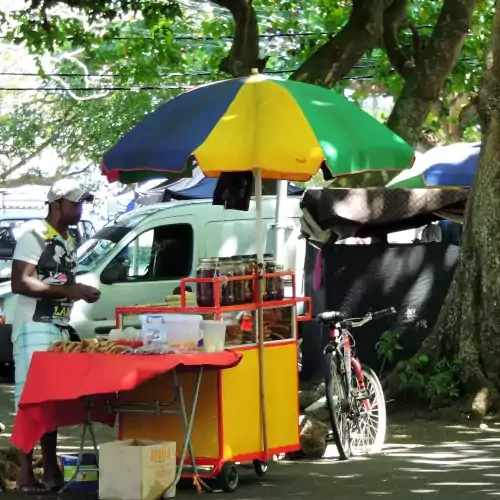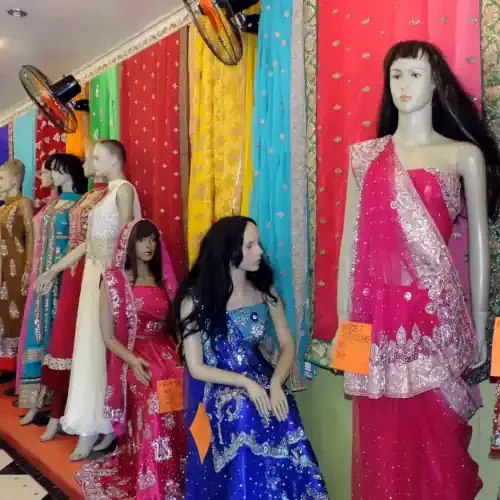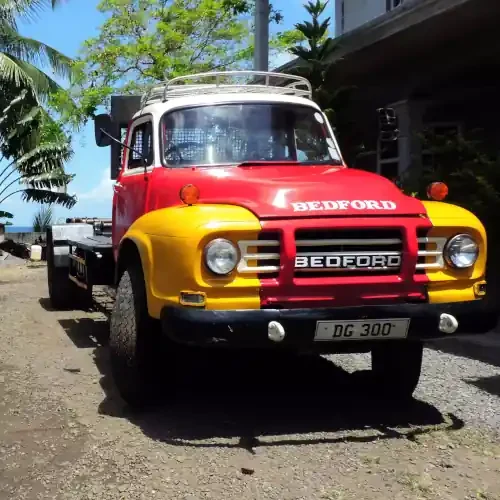Although short in terms of the period it covers, the history of Mauritius is nonetheless rich and interesting as owing to its actual multi-ethnic population, its history relates to the ones of many people around the world.
Here-below is a quick overview of the past four centuries. If the events seem to be concentrated around the 18th and 19th centuries, it may be because the country has been missing some young and passionate historians gathering daily information to put to the maturation process that will make them crispy historical anecdotes in the future.
Far from us the intention of making this blog a reference, you are nonetheless invited to correct, comment and share here any verified information or documents extracts or family stories that do not deserve to be forgotten and that could make this page richer.
As from the 10th century: There are indications that Arab navigators would have landed on Mauritius several times while exploring the seas further away from their coasts, without settling for long periods.
1500 – 1513 : The first map showing an island where Mauritius is found dates from 1502. The Arab name next to the dot was either Dina Harobi or Dinarobin. The Portuguese “rediscover” the island and make frequent calls between 1507 and 1513. They name the group of islands consisting of Mauritius, Reunion and Rodrigues the Mascarenhas and name Mauritius Ilha do Cirne (Swan island) from the name of the ship sent out for its exploration. The Portuguese abandon the island afterwards.
1598 : Dutch vessels sailing across the Indian ocean for the account of the Dutch East India Company, come across the island and find its location interesting. A fleet led by admirals Jacques Cornelius van Neck and Wybrandt van Warwyc diverted from their usual routes by a tropical storm see the island appearing ahead and decide to take shelter in the great bay located in the South-east of the island that they name de Warwyck after having named the island Mauritius in honour of Maurits Van Nassau, governor of the state of Orange in South-Africa.
In their quest for the ideal port, the Dutch, French and British have long hesitated between de Warwyck and Moluksreede (the harbour of molluscs), later known as Port-Louis.
1615 : During another exploring expedition, Pieter Both, then governor of the Dutch East India Company, died in the wreckage of his ship on the reefs of Baie-du-Tombeau near Port-Louis. The mountain with this unique contour, holding a boulder atop its finger has been named after him.
1638 : After an irregular presence on the island while seeking temporary shelter, or to repair their ships, the Dutch land to settle permanently and create a colony.
1639 : Adriaan van der Stel, second Dutch governor of Mauritius landed with his wife Maria, daughter of respectively an ex slave and a Dutch governor of Batavia. His son Simon, born aboard the vessel on the way to Mauritius was thus the first person to be officially registered as Mauritian. Managing to conceal his mixed blood, he was later named governor of the Cape, the place of apartheid par excellence.
1639 : Sugar-cane is introduced.
1642 : 105 slaves originating from madagascar were landed.
1658 : The Dutch abandon the island owing to hardships; namely storms, illnesses and insecurity from the runaway slaves.
1666 : The Dutch attempt a second colonisation.
1695 : Runaway slaves attack Fort Frederick Hendryk, the Duth’s main base.
1706 : Second attack on dutch settlements by slaves and runaway slaves.
1710 : The Dutch definitely abandon the island after having destroyed most of the Ebony forests, exterminating the Dodo and the giant tortoise, leaving behind offshoots of Sugar-cane, coconut trees, Java deer, boars, ducks, rats and… stray dogs (another peculiarity of Mauritius).
1715 : The French land on the island and called it Isle de France.
1719 : King Louis XV concedes the island to the French East India Company.
1732 : Attack of a garrison at Poste de Flacq by runaway slaves having settled inlands.
1735 : Mahé de Labourdonnais arrives in Mauritius as first governor of the French East India Company.
1735 : Mahé de Labourdonnais decides to develop port nord-ouest as the island’s main port and administrative centre. His objective was to make Mauritius far more than just a counter on the route to India. He wanted it to be rich ans attractive and turn it into a compulsory point of call for vessels sailing to and from India. He quickly erected a hospital, a mill, bakery and dry docks. His vision has been highly profitable to the island for many years after his departure.
1736 : End of the building works on the Government House.
1740 (Circa) : Arrival of the first Chinese migrants, formerly kidnapped and exiled from Sumatra.
1745 : The first sugar mills for exports are created. Although the Sugar-cane had been introduced in 1639, the plant was used for the making of alcohols, very important to sailors. The sugar production was for the numerous crews calling and also for local consumption.
1764 : The French East India company having gone bankrupt, Port nord-ouest does not look good. The streets were covered with filth and excrements. The authorities had to impose strict control over illegal bars, taverns and brothels that were many and doing good business in the middle-class neighbourhoods. The island is finally returned to King Louis XV.
1767 : Arrival of the first officials sent by the king, acting as governors and Port-Louis starts shining again. Two names are to remember: Desroches (landed in 1769) and especially Pierre Poivre as from 1767. They made a great job in putting the colony back on the track of development and a lot for its embellishment; the Pamplemousses garden is just an example. Its the dawn of a sumptuous period of glory. The port was busy as ships under all flags were calling for repair, restock and trade.
1781 : The glorious general Suffren called at Port-Louis. In a letter to his wife, he relates that “…this country softens, there are plenty of beautiful women and a very pleasant way-of-life…”
1790 : The colonists are informed about the French revolution 6 month after facts. The reactions are mixed.
1792 : With the arrival of the many fleeing the revolutionary France, the objectives and the stakes of the colony are changed. The first civil unrest occur after Robespierre propose the abolishment of slavery. More tension could be felt between the pure revolutionists, the moderate republicans and the conservative and royalist planters. Some breach between the local and the metropolitan government was created.
1800 : Observing an important activity of English vessels in the Indian Ocean, the colonists ask the Napoleon administration for protection against the invaders.
1803 : Arrives governor Decaen who creates a military force on the island. Decaen had anti-revolutionary convictions and was therefore more in-line with the pro-slavery local planters. He therefore re-established former governor de Souillac’s racial segregation laws, officially to put to end the profligacy within the middle-class. He nonetheless allowed the runaway slaves to live free and respected their wish in observing different religions and obediences.
Owing to the Napoleonic wars around the globe, France had many enemies and vessels from these countries were not calling at Port-Napoleon any-more. Trade died, drowning Mauritius into a slack period of depression. With starvation back onto the agenda, the privateers, namely “La Buse” and Robert Surcouf were urged to divert many of their booties to the island, ensuring that its inhabitants could keep fair standards of living.
1806 : Rebuilding of the village of Mahebourg on the South-east coast. The question about having another harbour in the South-east was still being discussed and the small hamlet founded in the days of Mahé de Labourdonnais was transformed by Decaen. Named Imperial port, it was meant to become a second main town at least. Later-on, in their effort of reconciliation, the English governors renamed it Mahebourg in honour of Mahé de Labourdonnais the “father of the country” in the eyes of the French colonists. (See ABC-book of Mauritius blog).
1810 : The year of the famous Vieux Grand Port naval battle, the only naval battle ever won by French on the British following which both commanders, vice-admiral Dupérré and admiral Willoughby, seriously injured, were placed next to each other in the district commander’s house transformed into a hospital for the occasion. This house now hosts the Naval Museum of Mauritius.
Despite this defeat, the British made another onslaught, this time at Cap-Malheureux, in the North of the island where they could land and take possession of the island finding hardly any resistance. The act of capitulation was drafted overnight in order to avoid unnecessary deaths. The French accepted to leave the island to the British crown conditionally that the French colonists could keep their lands, their businesses, their status and culture. This explains why the French language is more widely used than English.
1812 : Creation of the Mauritius Turf Club 3rd race-course in the world, 1st of the southern hemisphere.
1814 : As a symbolic gesture in their endeavour in taming the French colonists, the British renamed the island Mauritius and its main city and harbour Port-Louis.
1816 : On the 25th of September, 1/5 of Port-Louis burns down and the destroyed area, in the middle of Port Louis remained in ruins until… 1840.
The first daily newspaper of the southern hemisphere is published but the attempt does not last.
1820 : The first theatre of the southern hemisphere opens in Port Louis.
1822 : Decapitation of Ratsitatane, a revolutionary prince fighting against colonialism in Madagascar, exiled to Mauritius by his ruling brother.
1829 : The first landing of Indian indentured labourers under British rule; they are proposed by the government as an alternative to slavery.
1832 : Creation of Le Cernéen by Adrien d’Epinay who fought for the freedom of writing and expression, as a tool to bring the voices of the French planters, the plutocrats, to the ears of the British government.
1835 : Slavery is abolished at long last. The “worse British governor”, Sir. W. Nicolay fearing that the tensions linked to the abolition lead to a revolution against authorities decided to erect Fort Adélaïde atop Port-Louis hill in Port-Louis. Building works were terminated in 1835.
1837 – 38 : Following tough negotiations the British government agrees to pay a financial compensation for the abolition of slavery to the French planters. The migration of indentured labourers having resumed, the island counted some 25,000 Indians in 1838. Rapidly changing the demographics, the fights for descent life conditions were initiated, starting with the voting rights.
Another fire burns down 1/3 of the St. Louis and St. Georges streets in Port-Louis.
1841 :French poet Charles Baudelaire visits Mauritius unexpectedly.
1838 – 50 : Despite the abolition, the fires, the cyclones and several other calamities, Port-Louis was booming and became this “heaven-on-earth” town that Labourdonnais once dreamt of. The central market was built in 1845, potable water was distributed in all neighbourhoods, garbage was being collected and disposed of, the first street lamps were lit, theatre companies frequently played, hundreds of vessels called to trade their luxury goods. 385 vehicles were on the roads.
1846 – 51 : An important group of plantation owners and professionals tried to introduce an early form of communism and to obtain reduced inequalities between themselves and their workers.
1843 : Creation of the daily newspaper La Sentinelle by Remy Ollier reinforcing the freedom of the press. Like d’Epinay, he was a land owner and planter but represented the part of the population that was categorised as the “coloured intellectuals”. The political stand of La Sentinelle was thus differing from the one expressed in Le Cernéen.
1845 : Remy Ollier dies at the age of… 29. There are still questions raised about the causes and circumstances.
1856: The first steamer built in Mauritius by local shipowner Adam & Cie sails off Port-Louis.
1864 : On the 23rd of May, the first passenger train leaves Victoria station in Port-Louis for Mahebourg.
Death of Jacques Désiré Laval. French priest and spiritual leader of the Christians of Mauritius since 1841. He relieved the pain of the former slaves whose conditions were still outside humanity as excluded from it all. For his legendary kindness and his tremendous social work, Pope John-Paul II beatified him in 1979.
